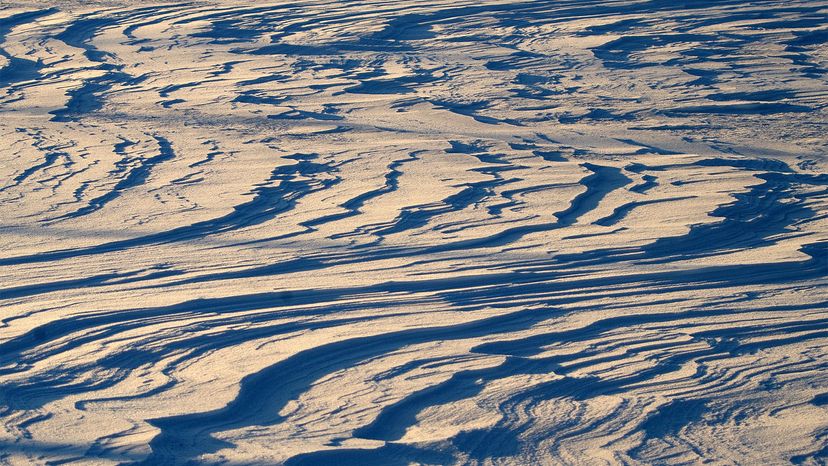
In the 1880s, a German-American anthropologist named Franz Boas traveled through northern Canada and became fascinated by the languages of the indigenous people he encountered there. The Inuit and Yupik people seemed to have an incredible variety of terms to describe snow. These days, the conservative estimate is that, between the two Canadian tribes, the numbers of snow words averages around 50.
There are special words for snow in English, too — though, perhaps not so many as the Inuit and Yupik have. For instance, there is an English word for the delicate, knife-like formations that relentless winds cut in hard snow: sastrugi.
Advertisement
Sastrugi, as you can probably tell, doesn't sound like a lot of English words, and that's because it hasn't been an English word for long — probably less than 200 years. It comes from the Russian word zastrugi, which means "small ridges." Sastrugi can be found on land or covering sea or lake ice, mostly in polar regions of this white-capped planet.
Sastrugi form much as sand dunes in the desert, when small grains of snow drift together in a strong wind and then freeze solid, forming hard ridges on the surface of the snow. When the winds pick up again, the hard snow granules scour the surface of the sastrugi, undercutting the dunes, creating beautiful sculptures in the snow.
According to those who have had to travel over sastrugi, however, the formations are tough to navigate through on foot, skis or even with a sled. They may be beautiful, but they're also "nature's speed bumps."
Advertisement